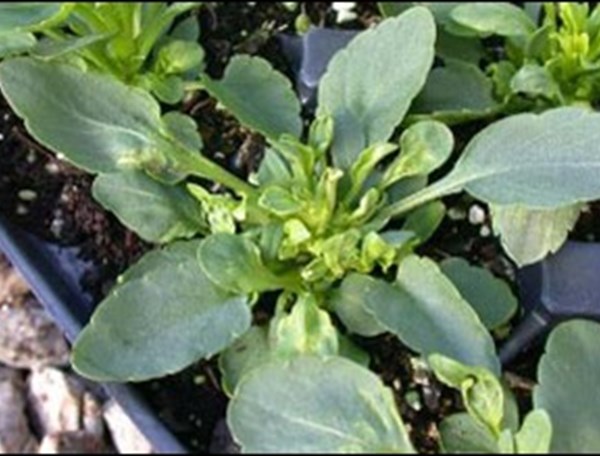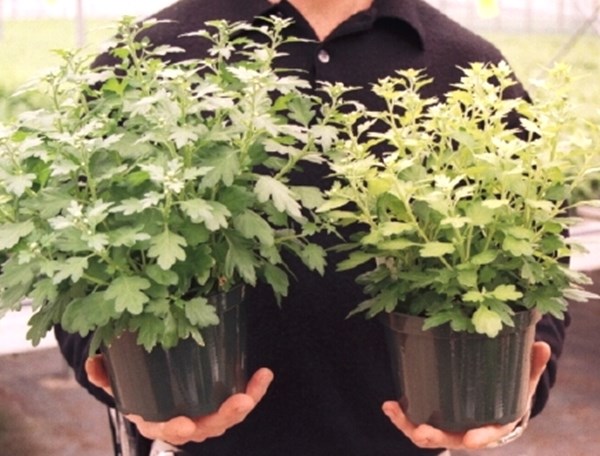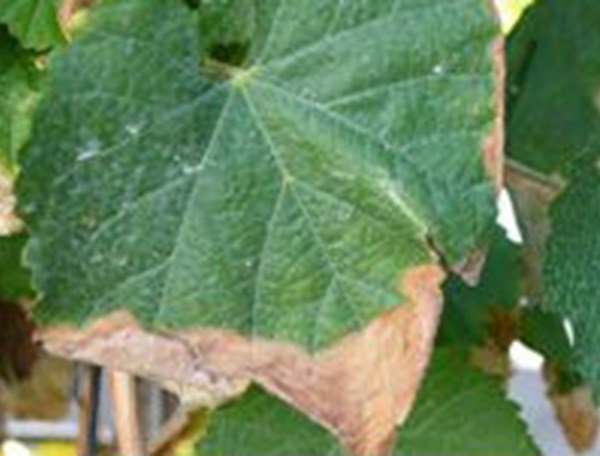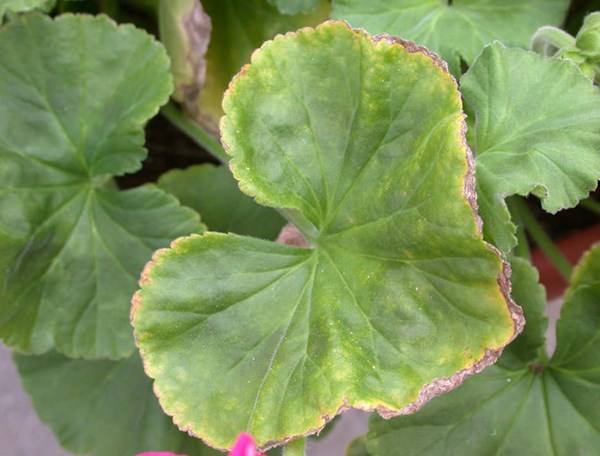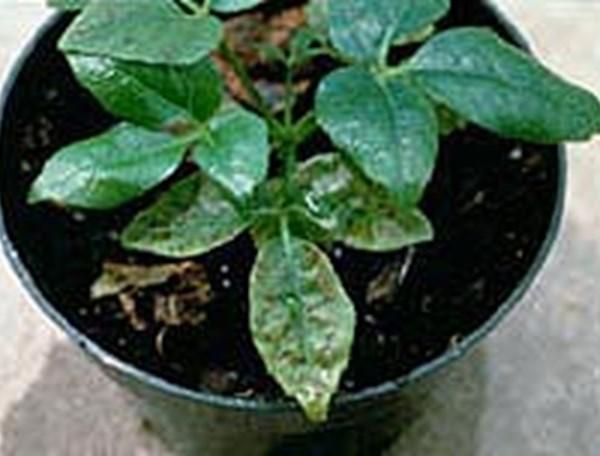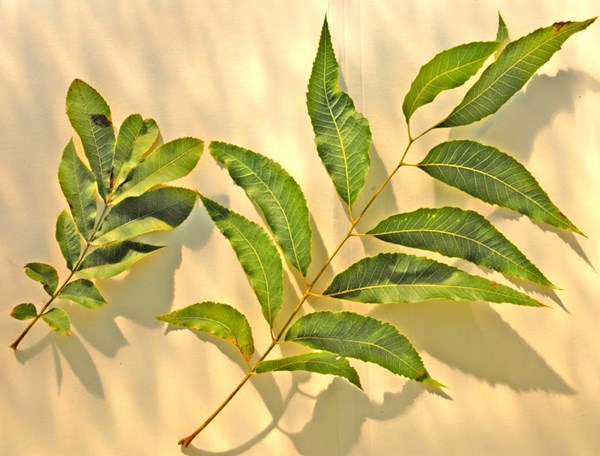Training Center
Role of Potassium in Plant Culture
Thursday, September 7, 2023 | Ed Bloodnick
Potassium (K) is the third of the three primary nutrients required by plants along with nitrogen (N) and phosphorus (P). When you read the label on a bag of fertilizer (e.g.: 20-10-20), the third number indicates the percentage of potassium by weight in the fertilizer. Technically, this number refers to K2O, which is 83% elemental K by weight. Water-soluble fertilizers are typically formulated using potassium nitrate or potassium sulfate as the source of potassium. In cases where sulfate is lacking in a fertilization program, potassium sulfate is a useful material. However, potassium chloride could also be used, but should be avoided since the added chloride is not needed by plants and contributes unwanted salts.
Function of Potassium
Unlike nitrogen and phosphorus, potassium is not used in the structural synthesis of bio-chemically important molecules. Potassium is found within the plant cell solution and is used for maintaining the turgor pressure of the cell (meaning it keeps the plant from wilting). In addition, potassium plays a role in the proper functioning of stomata (cells located on the bottom of the leaf that open and close to allow water vapor and waste gases to escape) and acts as an enzyme activator.
Deficiency
Leaf tissue analysis shows that potassium levels are often close to those of nitrogen at around 3 to 5% on a dry weight basis. Plants that are potassium deficient typically show symptoms such as chlorosis followed by necrosis at the tips and along the margins of leaves. Since potassium is mobile within the plant, deficiency symptoms appear on older leaves.
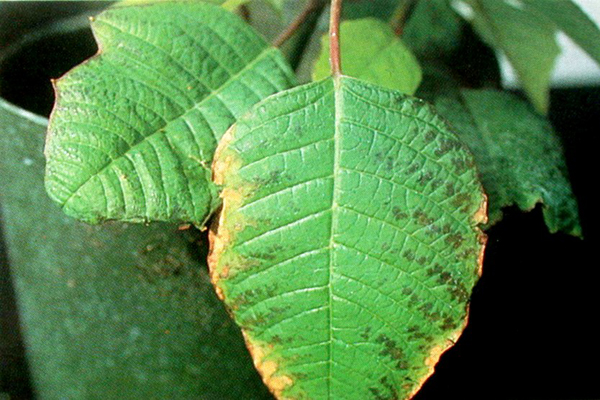
Potassium deficiency seen in poinsettias as necrotic leaf edges.
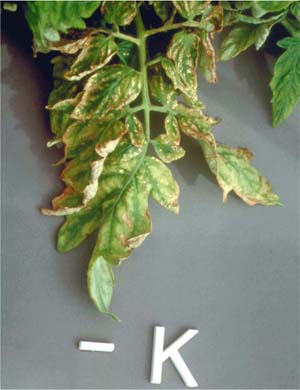
Potassium deficiency seen in tomato as necrotic leaf edges.
In soilless growing media, potassium availability is not significantly influenced by pH. Potassium deficiency symptoms are most likely to appear when insufficient potassium is provided by fertigation. There are also situations where an induced potassium deficiency arises if calcium, magnesium or sodium levels are too high, but it is rare if a crop is fed with normal potassium rates.
Toxicity
Potassium toxicity does not exist per se. However, excessive levels of potassium can cause antagonisms that lead to deficiencies in other nutrients such as magnesium and calcium. If this occurs, it is best to test the growing medium and plant tissue for nutrient content and adjust the fertilization program or application rate.
For more information about the use of potassium in crop production, please feel free to contact your Premier Tech Grower Services representative.
 |
 |
 |
 |
|---|---|---|---|
|
Ed Bloodnick |
Nathan Wallace-Springer |
Lance Lawson |
Victor Brantly |
 |
 |
 |
|
|
Troy Buechel |
Susan Parent |
Jose Chen Lopez |
PRO-MIX® is a registered trademark of PREMIER HORTICULTURE Ltd.
Related Articles
-
Role of Boron in Plant Culture
Do your plants have a deficiency or a toxicity related to boron? This article will help you better control this micronutrient.
-
Role of Sulfur in Plant Culture
This article will help you better understand the role of sulfur in your plant culture.
-
Role of Sodium and Chloride in Plant Culture
This article will help you better understand the role of sodium and chloride in your plant culture.
-
Role of Manganese in Plant Culture
Do your plants have a deficiency or a toxicity related to manganese? This article will help you better control this micronutrient.
-
Most fertilizers contain one or more of the following forms of nitrogen: nitrate, ammonium or urea. Each form of nitrogen influences plant growth differently and the plant uptake significantly impacts the pH of the growing medium.
-
Role of Nickel in Plant Culture
This article will help you better understand the role of nickel in your plant culture.

 Where to find our products
Where to find our products
